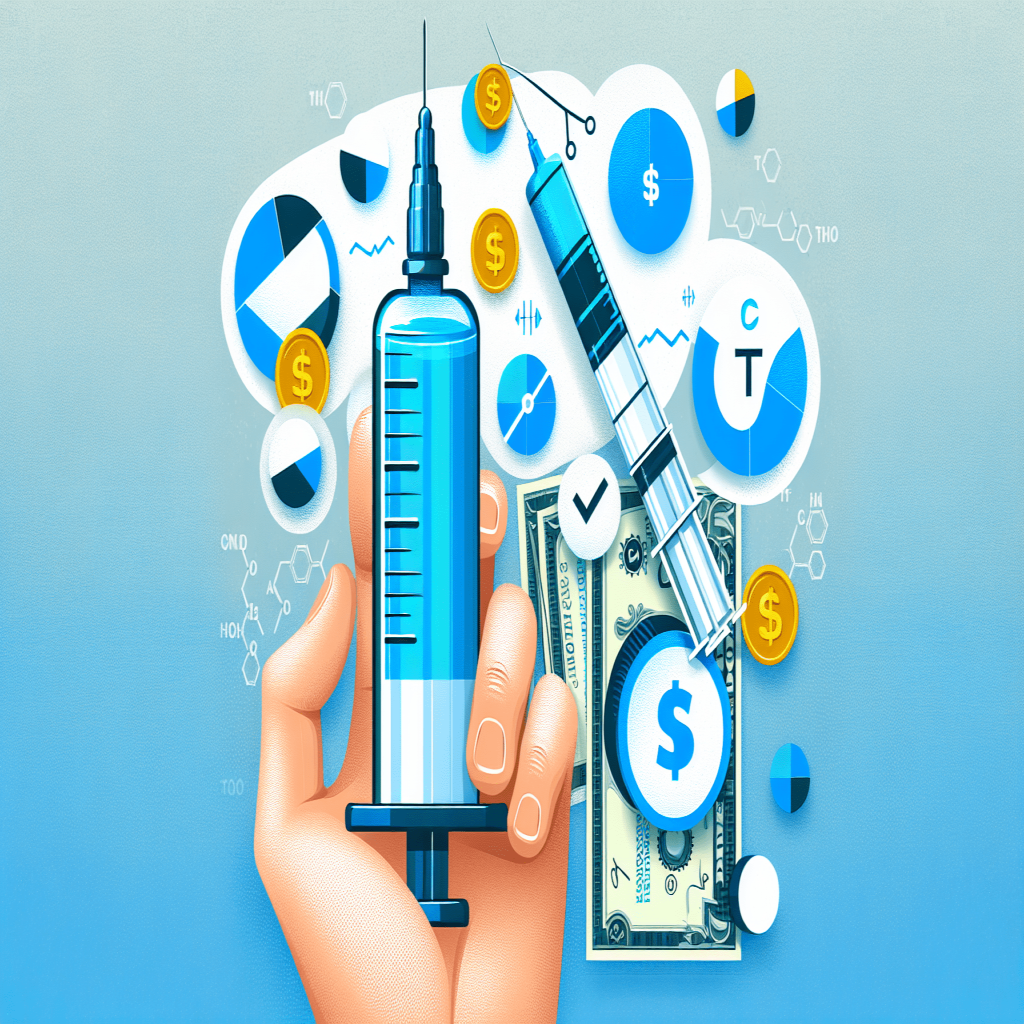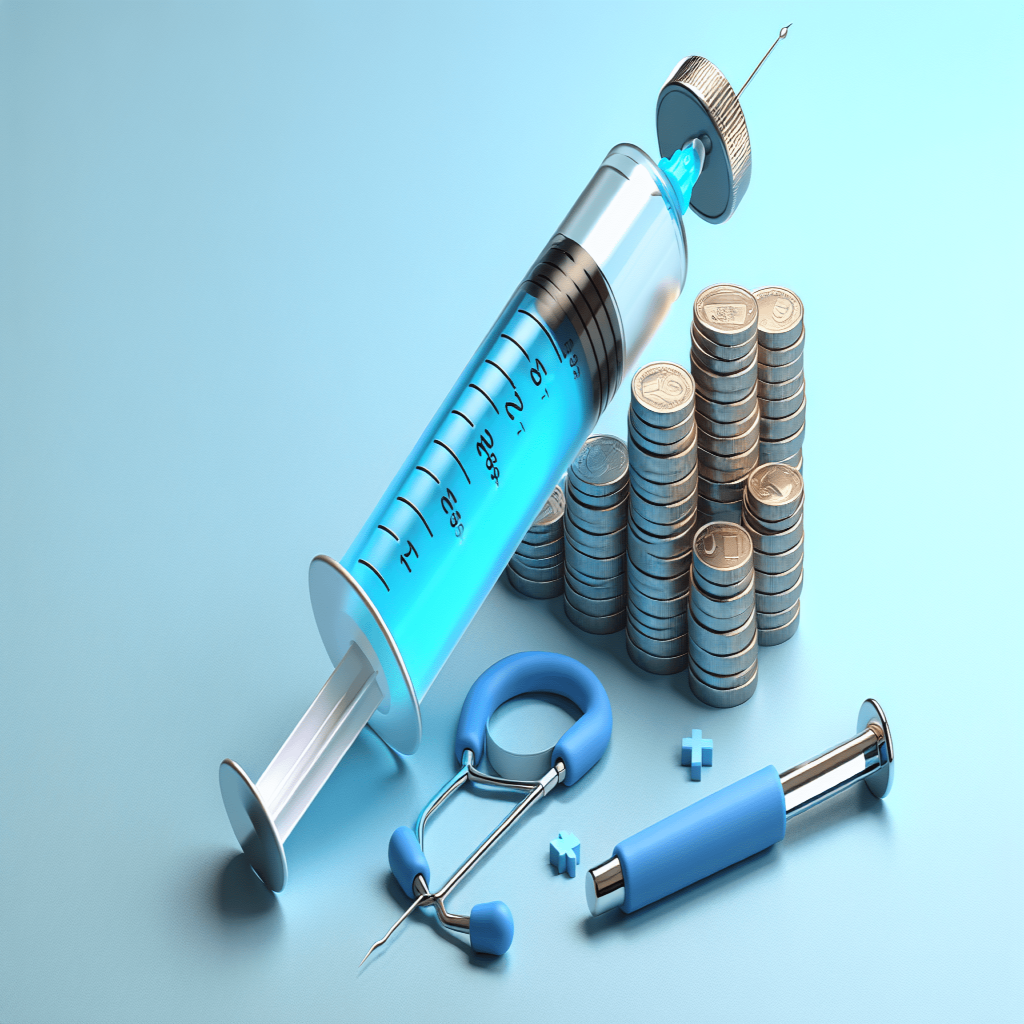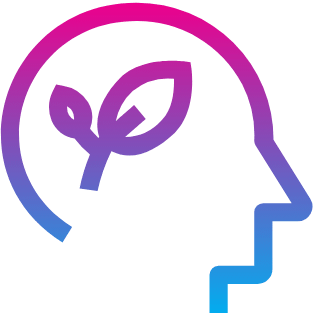“Ready to regain your vitality and reclaim your youth? Look no further. This comprehensive guide to affordable testosterone therapy is here to empower you with knowledge and solutions. Dive into the world of testosterone therapy as we break down the essentials, from understanding its benefits to exploring various affordable options and debunking common myths. Say goodbye to fatigue and hello to a healthier, more energized you. Let’s embark on this journey together!”

What is Testosterone Therapy?
Testosterone therapy, also known as androgen replacement therapy, is a medical treatment that involves the administration of testosterone to individuals with low levels of this hormone. It is primarily used to address testosterone deficiency, a condition that can affect both men and women. By supplementing the body with testosterone, this therapy aims to restore hormonal balance and alleviate the symptoms associated with low testosterone levels. Testosterone therapy can be administered through various methods, including topical applications, injections, patches, and oral medications.
Definition of Testosterone Therapy
Testosterone therapy refers to the medical treatment that involves the administration of exogenous testosterone to individuals with low testosterone levels. This therapy can be prescribed to both men and women, as testosterone is a vital hormone for overall health and well-being. By supplementing the body with additional testosterone, this therapy aims to restore hormone levels to a normal range and alleviate the symptoms caused by testosterone deficiency.
Benefits of Testosterone Therapy
Testosterone therapy offers a wide range of benefits for individuals suffering from testosterone deficiency. By replenishing testosterone levels, this therapy can improve various aspects of physical and mental health. Some of the key benefits of testosterone therapy include:
- Increased energy and stamina: Testosterone plays a crucial role in energy metabolism and the production of red blood cells. By increasing testosterone levels, individuals may experience a boost in energy and improved stamina.
- Enhanced muscle mass and strength: Testosterone is essential for muscle development and maintenance. Testosterone therapy can lead to increased muscle mass and strength, making it particularly beneficial for individuals engaging in strength training and exercise.
- Improved bone density: Testosterone plays a vital role in maintaining bone health. Testosterone therapy can help increase bone density, reducing the risk of osteoporosis and fractures.
- Enhanced libido and sexual function: Testosterone is responsible for maintaining sexual desire and function. Testosterone therapy can improve libido, reduce erectile dysfunction, and increase overall sexual satisfaction.
- Improved mood and cognitive function: Testosterone has a significant impact on mood and cognitive abilities. Testosterone therapy may help alleviate symptoms of depression, improve cognitive function, and enhance overall well-being.
Common Uses of Testosterone Therapy
Testosterone therapy is commonly used to address testosterone deficiency, but it can also be prescribed for specific medical conditions. Some of the common uses of testosterone therapy include:
- Hypogonadism: Testosterone therapy is often used to treat hypogonadism, a condition characterized by decreased testosterone production in the testes or ovaries. Hypogonadism can lead to a variety of symptoms, including fatigue, muscle loss, and decreased libido.
- Andropause: Testosterone therapy is sometimes prescribed to alleviate the symptoms of andropause, also known as “male menopause.” Andropause is characterized by a decrease in testosterone levels in men with aging, leading to symptoms such as fatigue, mood changes, and sexual dysfunction.
- Transgender hormone therapy: Testosterone therapy is an essential component of gender-affirming hormone therapy for transgender men. It helps individuals align their physical appearance with their gender identity by inducing masculine secondary sexual characteristics.
- Certain medical conditions: Testosterone therapy may be prescribed to individuals with certain medical conditions, such as HIV/AIDS, cancer, and autoimmune diseases, to combat the symptoms related to testosterone deficiency.
Understanding Testosterone Deficiency
Testosterone deficiency, also known as hypogonadism, is a medical condition characterized by abnormally low levels of testosterone in the body. It can affect both men and women and can have a significant impact on physical and mental health. Understanding the causes, symptoms, and diagnosis of testosterone deficiency is essential for identifying individuals who may benefit from testosterone therapy.
Causes of Low Testosterone Levels
Testosterone deficiency can have various causes, including:
- Aging: As individuals age, the natural production of testosterone in the body tends to decrease gradually.
- Hypothalamic or pituitary disorders: Dysfunction in the hypothalamus or pituitary gland, which regulate hormone production, can lead to low testosterone levels.
- Testicular or ovarian disorders: Testosterone deficiency can result from testicular or ovarian disorders that hinder the production of testosterone.
- Certain medical conditions: Chronic illnesses, such as HIV/AIDS, kidney disease, and liver disease, can contribute to low testosterone levels.
- Medications and treatments: Certain medications, such as corticosteroids and opioids, can suppress testosterone production. Additionally, treatments like chemotherapy and radiation therapy can affect testosterone levels.
- Lifestyle factors: Obesity, excessive alcohol consumption, and chronic stress can all contribute to lower testosterone levels.
Symptoms of Testosterone Deficiency
Testosterone deficiency can manifest in various ways, and the symptoms may differ between men and women. Some of the common symptoms of testosterone deficiency include:
- Fatigue and decreased energy levels.
- Decreased muscle mass and strength.
- Loss of bone density and increased risk of fractures.
- Decreased libido and sexual function.
- Mood changes, including irritability and depression.
- Cognitive difficulties, such as poor concentration and memory problems.
- Weight gain, particularly around the abdomen.
- Insomnia and disrupted sleep patterns.
Diagnosing Testosterone Deficiency
To diagnose testosterone deficiency, healthcare professionals typically conduct a comprehensive evaluation, including a review of the individual’s medical history, physical examination, and blood tests. Blood tests, specifically measuring testosterone levels, are crucial in determining if an individual is experiencing testosterone deficiency. Additional tests may be conducted to rule out underlying medical conditions that could be causing low testosterone levels. It is essential to consult with a healthcare professional for an accurate diagnosis and appropriate treatment options.
Types of Testosterone Therapy
Testosterone therapy is available in different forms, allowing individuals to choose a method that best suits their preferences and medical needs. The most common types of testosterone therapy include topical testosterone, injectable testosterone, testosterone patches, and oral testosterone.
Topical Testosterone
Topical testosterone refers to the application of testosterone gel or cream to the skin, which allows for absorption into the bloodstream. This method is convenient and easy to administer. Topical testosterone is typically applied once daily to specific areas, such as the upper arms, shoulders, or abdomen. It is important to follow the prescribed dosage and application instructions to ensure effective absorption and minimize the risk of accidental transfer to others.
Injectable Testosterone
Injectable testosterone involves the administration of testosterone via intramuscular injection. This method allows for a controlled release of testosterone into the bloodstream. Injectable testosterone is typically administered every few weeks or months, depending on the specific formulation and dosage. Administration must be performed by a healthcare professional to ensure safety and accurate dosing.
Testosterone Patches
Testosterone patches are transdermal patches that deliver a continuous supply of testosterone through the skin. The patches are usually applied to clean, dry areas of the skin, such as the back, thighs, or upper arms. Testosterone patches should be applied daily, and it is important to rotate the application sites to prevent skin irritation. This method offers a convenient and discreet option for testosterone therapy.
Oral Testosterone
Oral testosterone refers to testosterone supplementation in the form of oral medications or tablets. However, oral testosterone is less commonly prescribed due to its potential risks and limited effectiveness compared to other forms of testosterone therapy. Oral testosterone can strain the liver and may have negative effects on cholesterol levels. It is typically recommended to explore other methods of testosterone therapy before considering oral testosterone.

Finding Affordable Testosterone Therapy Options
Affordability is a significant consideration when seeking testosterone therapy. Fortunately, there are several strategies and options to explore to make testosterone therapy more accessible and affordable.
Researching Different Clinics and Providers
One of the first steps in finding affordable testosterone therapy options is to research different clinics and providers. Compare the prices, credentials, and reputations of different healthcare providers offering testosterone therapy. Reading reviews and testimonials from other patients can also provide valuable insights into the quality of care and affordability.
Check Insurance Coverage for Testosterone Therapy
It is essential to review your health insurance coverage to determine if testosterone therapy is covered. Check with your insurance provider to understand the specific requirements, limitations, and potential costs associated with testosterone therapy. Some insurance plans may cover all or a portion of the therapy, making it more affordable for individuals seeking treatment.
Exploring Generic Testosterone Options
Generic testosterone formulations can be more affordable compared to brand-name options. Talk to your healthcare provider about generic testosterone options and inquire about their availability and potential cost savings. Generic medications are often bioequivalent to their brand-name counterparts, ensuring comparable effectiveness and safety.
Participating in Clinical Trials or Studies
Another option for accessing affordable testosterone therapy is to participate in clinical trials or studies. Clinical trials often offer opportunities for individuals to receive treatment at reduced or no cost while contributing to scientific research. Consult with your healthcare provider or research local medical institutions to inquire about ongoing trials related to testosterone therapy.
Risks and Side Effects of Testosterone Therapy
As with any medical treatment, testosterone therapy carries potential risks and side effects. Understanding these risks and side effects is crucial for making an informed decision and ensuring the safe and effective implementation of testosterone therapy.
Potential Risks of Testosterone Therapy
While testosterone therapy is generally considered safe, it may carry certain risks, including:
- Cardiovascular risks: Testosterone therapy may increase the risk of cardiovascular events, such as heart attacks and strokes. This risk is more pronounced in individuals with pre-existing cardiovascular conditions.
- Prostate enlargement and cancer: Testosterone therapy can stimulate the growth of the prostate gland, potentially leading to an increase in prostate size or the development of prostate cancer. Regular monitoring is essential to detect any changes in the prostate.
- Sleep apnea: Testosterone therapy can worsen or contribute to sleep apnea, a sleep disorder characterized by interrupted breathing during sleep. Individuals with a history of sleep apnea should be closely monitored.
- Fluid retention: Testosterone therapy may cause fluid retention, leading to edema or swelling. Individuals with heart, kidney, or liver conditions are at a higher risk of fluid retention complications.
- Acne and oily skin: Increased testosterone levels can stimulate sebum production, potentially leading to acne breakouts and oily skin.
Common Side Effects of Testosterone Therapy
Testosterone therapy may also cause certain side effects, which can vary depending on the individual and the chosen method of administration. Some common side effects include:
- Skin irritation or rashes at the application site (for topical testosterone).
- Pain or inflammation at the injection site (for injectable testosterone).
- Itching or redness at the patch application site (for testosterone patches).
- Gastrointestinal disturbances, such as nausea or indigestion (for oral testosterone).
- Changes in mood or emotional sensitivity.
- Increased aggression or irritability.
- Headaches or dizziness.
- Increased or decreased libido.
Monitoring and Managing Side Effects
Regular monitoring and open communication with healthcare providers are essential for managing and addressing any potential side effects of testosterone therapy. Healthcare professionals can adjust the dosage or recommend alternative treatment methods to minimize side effects. It is crucial to report any concerning symptoms promptly to ensure appropriate care and support throughout the course of testosterone therapy.
Alternative Natural Approaches to Boost Testosterone Levels
In addition to testosterone therapy, there are alternative natural approaches that can help boost testosterone levels. These approaches focus on lifestyle changes and habits that can positively impact testosterone production and overall hormonal balance.
Exercise and Strength Training
Regular exercise, particularly strength training and high-intensity interval training (HIIT), can naturally boost testosterone levels in both men and women. Engaging in physical activity stimulates the production of testosterone, promoting muscle growth, and enhancing overall well-being. Aim for at least 150 minutes of moderate-intensity exercise or 75 minutes of vigorous exercise per week to reap the testosterone-boosting benefits.
Dietary Changes and Nutritional Supplements
Certain dietary changes and nutritional supplements can support healthy testosterone levels. Focus on consuming a balanced diet that includes lean proteins, healthy fats, whole grains, and plenty of fruits and vegetables. Adequate vitamin D and zinc intake have been linked to testosterone production, so consider incorporating foods rich in these nutrients or discussing supplementation with a healthcare provider.
Stress Reduction and Better Sleep Habits
Chronic stress and poor sleep quality can negatively impact testosterone levels. Engage in stress reduction techniques, such as meditation, yoga, or deep breathing exercises, to manage stress levels effectively. Additionally, prioritize quality sleep by maintaining a consistent sleep schedule, creating a relaxing bedtime routine, and ensuring a comfortable sleep environment.
The Importance of Regular Monitoring and Follow-up
Regular monitoring and follow-up are vital components of testosterone therapy to ensure optimal results and safety. Monitoring testosterone levels, attending follow-up appointments, and undergoing occasional blood tests are all essential for assessing the effectiveness of treatment and making necessary adjustments.
Monitoring Testosterone Levels
Regular monitoring of testosterone levels helps healthcare providers to assess the effectiveness of testosterone therapy and adjust the dosage if needed. Typically, testosterone levels are measured through blood tests, which may need to be conducted periodically throughout the course of therapy. These tests provide valuable information about hormone levels and enable healthcare professionals to tailor treatment plans accordingly.
Follow-up Appointments and Blood Tests
Follow-up appointments allow healthcare providers to evaluate the response to testosterone therapy and address any concerns or questions. These appointments may involve discussions about treatment progress, potential side effects, and lifestyle modifications. Periodic blood tests may also be scheduled to monitor hormone levels and overall health.
Adjustments to Testosterone Therapy
Based on the results of monitoring and follow-up appointments, adjustments to testosterone therapy may be necessary. Healthcare providers can modify the dosage, change the method of administration, or explore alternative treatment options to optimize hormone levels and manage any side effects. Open communication with healthcare providers is essential for determining the most effective course of treatment for each individual.
Testosterone Therapy and Fertility
Testosterone therapy can have implications for fertility, and individuals considering testosterone therapy should be aware of its potential impact. It is important to discuss fertility concerns with healthcare providers before initiating testosterone therapy.
Effects of Testosterone Therapy on Fertility
Testosterone therapy can suppress natural hormone production, including sperm production in men and menstrual cycles in women. Consequently, testosterone therapy can potentially decrease fertility in both genders. Individuals concerned about preserving fertility should discuss alternative treatment options or fertility preservation techniques with their healthcare providers.
Preserving Fertility with Testosterone Therapy
For individuals who wish to preserve fertility while undergoing testosterone therapy, certain strategies can be implemented. One option is the use of medications that stimulate natural testosterone production, such as human chorionic gonadotropin (HCG) for men. Additionally, sperm or egg freezing may be recommended to preserve fertility potential. Open and honest discussions with healthcare providers are crucial for exploring and implementing fertility preservation options.
Testosterone Therapy for Transgender Individuals
Testosterone therapy plays a vital role in gender-affirming hormone therapy for transgender individuals. It helps individuals align their physical appearance with their gender identity by inducing masculine secondary sexual characteristics.
Overview of Gender-Affirming Hormone Therapy
Gender-affirming hormone therapy involves the use of hormones to develop physical characteristics that align with an individual’s gender identity. For transgender men, testosterone therapy is an essential component of the hormone regimen. Testosterone therapy promotes the development of masculine secondary sexual characteristics, such as facial hair growth, voice deepening, and muscle development.
Accessing Affordable Testosterone Therapy for Transgender Individuals
Accessing affordable testosterone therapy is particularly important for transgender individuals, as hormone therapy is often a lifelong commitment. To make testosterone therapy more affordable for transgender individuals, consider the strategies mentioned earlier, such as researching different clinics, checking insurance coverage, and exploring generic options. Additionally, some transgender-focused healthcare providers and organizations offer financial assistance or sliding scale fees to make hormone therapy more affordable and accessible.
Legal and Safety Considerations
When considering testosterone therapy, it is important to be aware of legal requirements and safety guidelines to ensure a safe and legal treatment experience.
Prescription Requirements for Testosterone Therapy
Testosterone therapy is a prescription-based treatment. It is crucial to consult with a healthcare provider who has the authority to prescribe and monitor testosterone therapy. Non-prescription alternatives or obtaining testosterone from illegal sources can pose significant health risks and legal consequences.
Avoiding Illegal and Potentially Harmful Sources
Obtaining testosterone from illegal sources, such as online sellers or unlicensed individuals, can be dangerous and potentially harmful. These sources may provide counterfeit or substandard products, increasing the risk of adverse reactions and compromised safety. Always obtain testosterone therapy from reputable healthcare providers and pharmacies to ensure authenticity and quality.
Safety Guidelines for Testosterone Therapy
To ensure the safe implementation of testosterone therapy, it is important to follow safety guidelines provided by healthcare professionals. These guidelines may include dosing instructions, proper administration techniques, and recommendations for monitoring and managing side effects. Adhering to these guidelines and maintaining open communication with healthcare providers is essential for the safest and most effective testosterone therapy experience.
In conclusion, affordable testosterone therapy offers individuals with testosterone deficiency an opportunity to restore hormonal balance and improve their overall quality of life. Understanding the definition, benefits, common uses, and various types of testosterone therapy is crucial for making informed decisions about treatment options. It is important to consider the risks and potential side effects, as well as explore alternative approaches and monitor the therapy’s effectiveness regularly. Testosterone therapy can have implications for fertility, and transgender individuals can access testosterone therapy as part of their gender-affirming hormone therapy. By adhering to legal and safety guidelines and seeking affordable options, individuals can access testosterone therapy in a safe and cost-effective manner.




